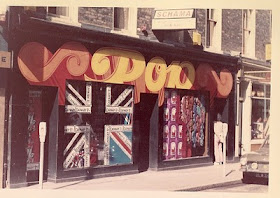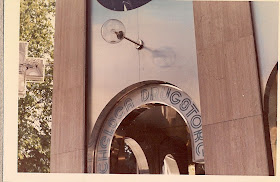

'Technology & Technicians' was a library record recorded in Cathedral Studios, Lincoln in 1971. Sounds and textures for the laboratory.


'Versatile Pot Recorders'. Folk quartet from Grantham who pioneered use of the the 'synthaesia' device, pictured above. A small modular instrument that induced trance-like sensations and bizarre hallucinations amongst players and listeners alike.

Eponymous debut EP of Keep It Dry, funk quartet from Biggin Hill. Design by Peter Saville's brother James.

Acid Mist's biggest selling group in 1972 was 'Let's Get Together', a proto-industrial easy listening trio of arrangers and singers from Leicester. The album they're promoting here ('The Full Force in Filtration') was released on spin-off label 'Separation'.

Acid Mist dabbled in electronics, launching the Tricon synthaesia range. They were banned on the continent following a festival in Rotterdam.

Poster advertising Dusseldorf-based krautfolk group 'Particle Free'.

Another spin-off label, launched in 1975 was 'Joy' - it used the Acid Mist in-house session musicians to record dance music for the newly nationalised Locarno dancehall chain.

A promotional poster for failed teen idol Robbie Pursey. Unsure how to promote him, Pursey's Acid Mist singles flopped. Pursey left the music industry in 1976 to form a commune in Hull.

Water was a Christian bass-drums-synth/flute trio who recorded 'Electric Drilling' at Cathedral Studios in late 1975. Founder member Davey Twilley (pictured on the album cover) composed the original music for 'Play it Safe' and the alternative faiths programme 'Kandlemas'.
All of these items are extremely valuable but very scarce. Many are not even listed in buyers guides.

















